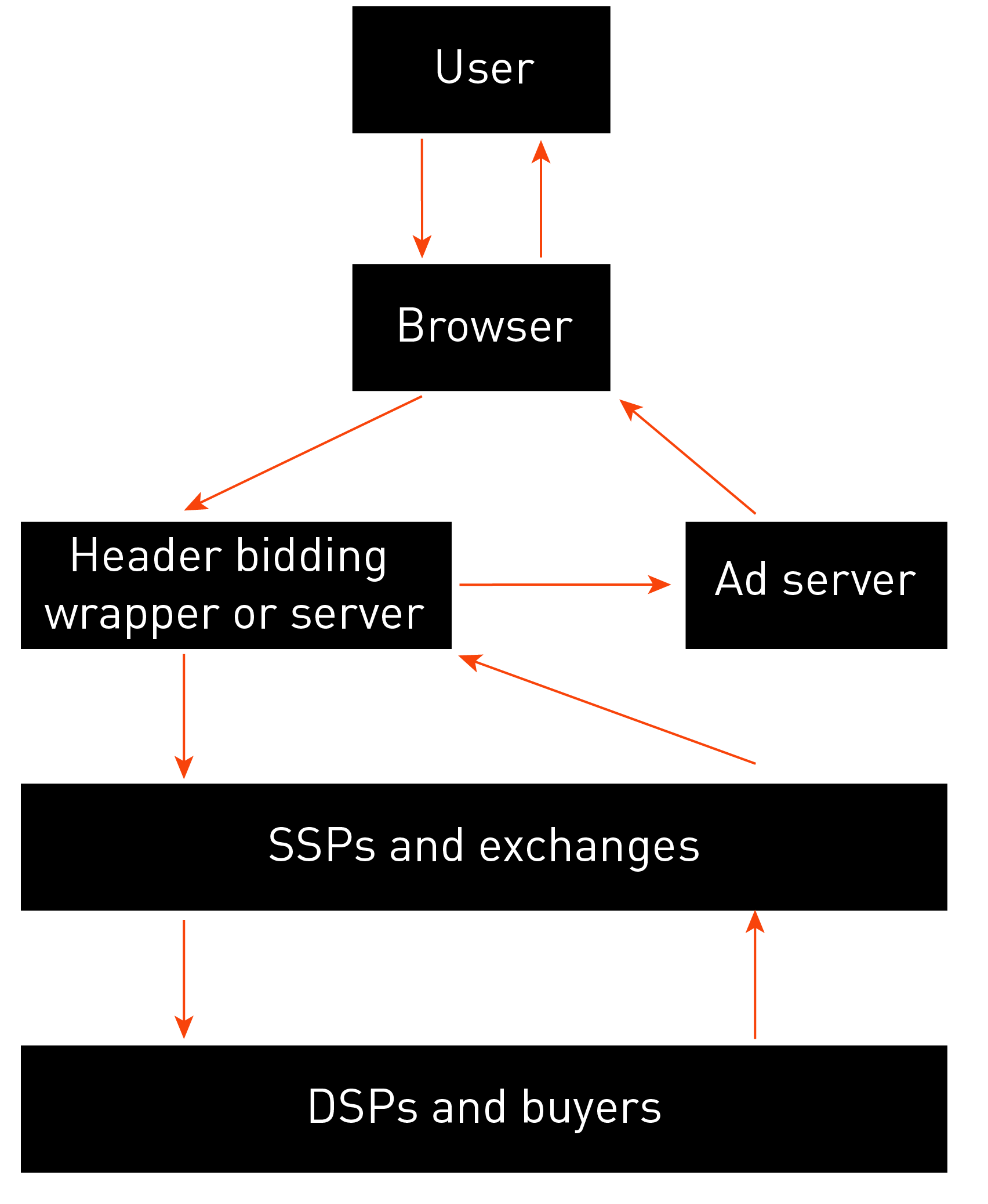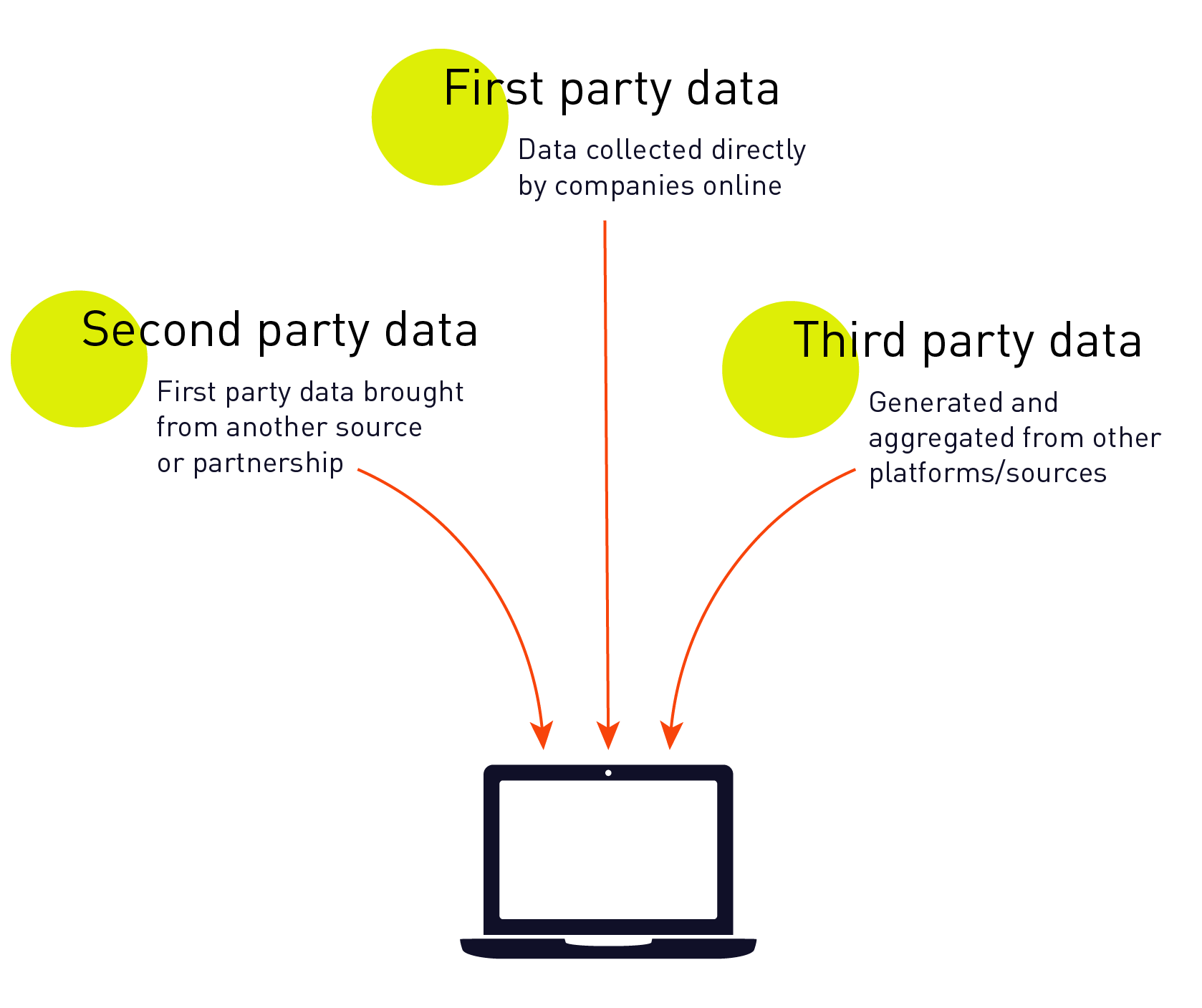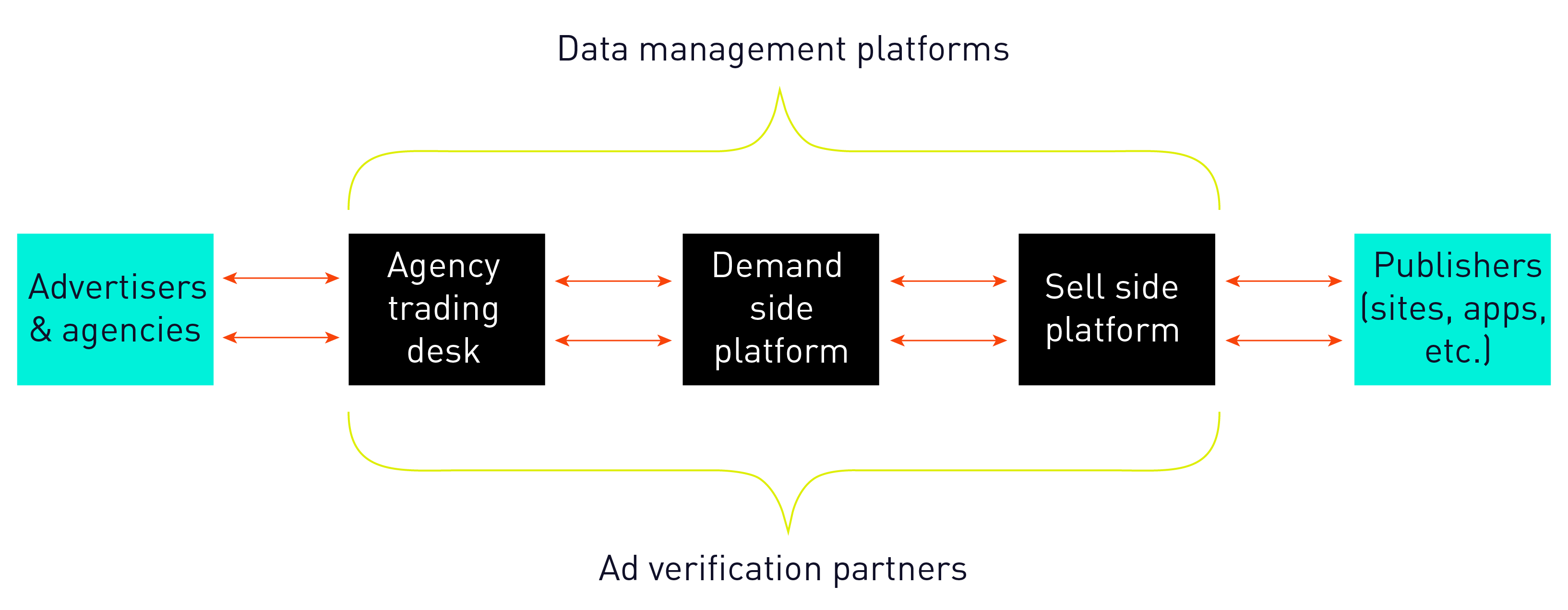Back to Basics Guide to Programmatic
We, alongside the IAB’s Display & Data Steering Group, have put together this Back to Basics Guide to Programmatic to try and simplify what can be quite an intimidating topic!
Programmatic advertising has completely changed the way that digital advertising is bought and sold, making it more efficient, easier, and effective, when done correctly. However, the sheer speed at which programmatic has caused digital display advertising to evolve, has made it quite a tricky topic to get to grips and stay up to date with.
We, alongside the IAB’s Display & Data Steering Group, have put together this Back to Basics Guide to Programmatic to try and simplify what can be quite an intimidating topic. It’s perfect for all new starters in the industry, as well as those more experienced people who need a refresh, and covers everything from how an ad actually gets to a user through to how to pick the right partner for your business.
I’ve heard lots of people talking about programmatic advertising but...
3) …How does it ‘differ’ from other forms of digital advertising?
4) …How does an ad actually get to a user?
5) …Why do I hear people talking about an auction?
6) …Where does all the data, that powers programmatic advertising, come from?
7) …It all sounds quite technical… where does creativity fit into the world of programmatic?
8) …What different businesses are involved?
9) …What does the supply chain look like?
10) …and finally, how do I choose the right partner for my business?
1)...What actually is it?
Simply stated, programmatic advertising is the automated process of buying and selling digital ad inventory; connecting advertisers to publishers to deliver ads to the right person, at the right time, in the right place.
Before programmatic advertising, marketers turned to a handful of publishers with whom they would contract to run campaigns. Publishers had to individually traffic each ad and advertisers had little control over how often the same user would see the same ads.
Programmatic advertising has revolutionised this process by using automated software to handle previously manual transactions to deliver these meaningful engagements on any device, through any channel - from your social media feeds to your favourite website. This offers buyers and sellers the flexibility to adjust campaigns in real time, for optimal performance, making it much easier to dial up the things that are working and dial down the things that aren’t.
Content provided by Pulsepoint

2)...Why should I use it?
The benefit to using programmatic advertising is that it enables brands to deliver on the optimum advertising mix:
-
Right ad
-
Right audience
-
Right time
-
Right price
What’s more, the right technology powered with meaningful data (be it consented first-party data or GDPR ready audience insights) creates a trusted, transparent, environment for brands to engage their audiences. If GDPR is another topic you are trying to get your head around then there are lots of other resources about it on the IAB UK website here.
The challenge for advertisers is finding the right audience data in Data Management Platforms (DMPs) & Demand Side Platforms (DSPs). DMP’s have access to large volumes of third-party audience profiles based on sociodemographic, transactional and product ownership data sets, and contextual insights such as interests and behavioural actions. It’s important for advertisers to choose data and environments that have been activated via rigorous due-diligent checks from publishers and online data suppliers, and anonymously identified and profiled, verifying the compliance, privacy and quality of the data. When matched with offline data sets, only the highest quality data points should be curated into segments of target consumer audience profiles with real interests and needs.
If advertisers take the time to pick the right partner, with the right data sets, then programmatic advertising really is a no brainer. More on picking the right partner for your business in Q10 of this guide.
Content provided by Eyeota

3)...How does it 'differ' from other forms of digital advertising?
They key with programmatic is that it essentially means ‘automated’. Traditionally, ad inventory was bought at fixed prices either via ‘direct’ sales or ‘indirect’ networks:
-
Direct Sales: This is when inventory is bought at a fixed price directly from media owners through in-house or external sales teams, using insertion orders and manual processes to book and run the campaign. Just imagine wanting to buy an ad space for a few weeks and having to directly call or contact a member of the sales team for this to happen.
-
Networks: This is, again, when inventory is bought at a fixed price but instead of directly from the media owner, it is being bought from third-party packages which aggregate supply across multiple media owners. Imagine spending money on ad space which is then shared across various platforms.
Now, with programmatic, it can still be split into ‘direct’ and ‘indirect’ but it’s slightly different:
-
Programmatic direct is when inventory is bought from a particular media owner using automated processes, where a direct relationship exists between the buyer and media owner in the form of pre-existing deal terms. So, rather than having to call up to buy a space for a set amount of time, spaces can be bought automatically with pricing limits etc.
-
Programmatic indirect is when inventory is bought on an impressions-by-impression basis in real-time through an open, unreserved auction. This essentially means that a space is available to be bought at the highest price and there doesn’t have to be a pre-existing agreement between the advertiser and the seller.
Content provided by IAB UK

4)...How does an ad actually get to a user?
It's now been a few years now since header bidding first made waves in the programmatic space, and since then it has become ubiquitous in the UK. There are many 'flavours' of header bidding but when we are thinking about how an ad gets to a user it can all be distilled down into a few simple steps.
-
A user opens a browser to visit a website.
-
As the page loads, parallel ad-requests are sent to a number of Supply-Side Platforms (SSPs) and Ad Exchanges through the webpage's header bidding wrapper (or header bidding server). A header bidding wrapper or ‘container’ is a management system used by a publisher to collect bid responses from multiple demand partners in one place. This technology layer allows publishers to more easily manage their partners and to set header bidding standards such as latency.
-
The Exchanges send bid requests to the Demand Side Platforms (DSP) that have ad campaigns set up to bid on relevant inventory.
-
The DSPs then respond to the exchange’s request with a bid.
-
The exchanges then conduct their own auctions and send the winning bid & the creative back to the wrapper.
-
The wrapper sends either the top bid or all the bids to the publisher’s ad server.
-
The ad server then renders the creative on the webpage - and voila, the ad has got to the user.
This whole process happens in a fraction of time, however the sheer amount of code in a wrapper from all the different exchanges and DSPs means that loading time and latency can become an issue for the user. To combat this, we are beginning to see a move to server side header bidding, which takes that 'weight' off the browser and markedly improves the user experience.

Content provided by Rubicon Project

5)...Why do I hear people talking about an auction?
This is because in today’s digital media world, the majority of advertising is bought and sold through a real-time auction. In this environment, ad space is auctioned off on a single ad impression basis (i.e. every time a call is made to a publisher’s ad server to fetch an ad creative).
These auctions take place in milliseconds while a web page is loading. Information about the page the ad will appear on and the user viewing the page is passed on to potential buyers. Based on various data points, each advertiser will decide if they want to bid and (if so) how much they are willing to pay. Once a winner is chosen, their ad creative is displayed on the site, and the process starts again each time someone opens a new web page.
Auctions are a frequent topic of conversation recently for two reasons.
First, new technology – namely, header bidding – is changing the way auctions work. This allows publishers to offer each impression to multiple ad exchanges and Supply Side Platforms (SSPs) simultaneously, maximising the number of entities that can bid in real time.
Secondly, we are seeing a shift in auction pricing mechanisms from second-price to first-price. Traditionally, online advertising auctions were based on a second price model, where the highest bidder wins, but pays the second highest bid price plus a small premium (similar to eBay). Today, the industry is moving to a first price auction model, where the winner pays their actual bid price. This is seen as a more transparent option.
Content provided by Pubmatic

6)...Where does all the data, that powers programmatic advertising, come from?
In this era of Big Data, data points amassed from numerous possible sources can paint a rich picture about the customer. But it can also overwhelm. In fact, more data can complicate a marketer’s job. Not only might it raise privacy concerns, but too much data will mean you cannot see the wood for the trees. And while programmatic advertising thrives on data, a campaign is only as good as the data that fuels it—that is, more data is not the secret to a campaign’s success.
It may be helpful to start with a quick survey of the kinds of data available to marketers. These ultimately fall into three different categories:
-
The first is the advertiser’s own data – first-party assets include online and offline information collected directly by advertisers feeding into CRM, merchandising, loyalty or revenue management systems.
-
Meanwhile, second-party data is generally first-party data accessed via different sources or partners for a fee.
-
And third-party assets may be generated and aggregated from a number of other platforms or marketing databases.
An advertiser’s greatest competitive advantage is first-party data. The diversity of transactional information (e.g. past-purchase history, abandoned baskets, product returns, loyalty programme participation) is already structured, accessible and ready to use towards segmenting customer groups based on shopping and browsing behaviour. Fuelling campaigns with first-party data enables a granular level of targeting, which allows advertisers to reach different audiences with tailored, programmatic creatives (a win for the customer), all the while achieving performance goals or branding KPIs (a win for the advertiser), via strategic investments into different customer segments.
In short, first-party data provides advertisers with a rich and credible foundation to power impactful programmatic campaigns with granular targeting capability and accuracy.

Content provided by Sociomantic

7)...It all sounds quite technical...where does creativity fit into the world of programmatic?
Much of the initial hype around programmatic rotated around how it would make buying online ad space cheaper. In the early years, this left concerns that brands and agencies were ignoring everything they had learnt about the importance of relevant and engaging creative execution in advertising.
However, programmatic provided an overdue need for speed, scale, and automation, which when used correctly, can enhance the creative process.
It goes without saying that advertisers want to deliver personalised ads that are relevant to a specific audience. Instead of showing one generalised creative to all, programmatic enables advertisers to segment audiences into groups and show each group a custom creative that is more likely to influence their behaviour. There are also programmatic tools that automatically select and combine creative assets according to real-time context; this includes things such as a consumer’s location and what they are doing in a particular moment.
The key approach any campaign, is to start with a strong objective that clearly defines your goals. The next step should consider the use of powerful data insights, that both segment audiences, and build meaningful creative. Then utilise the programmatic pipes to achieve campaign efficiency.
Content provided by Verve
![]()
I’ve heard lots of people talk about supply chain…
8)...What different businesses are involved?
The digital supply chain used to be very simple. The brand would contract the agency to buy inventory on the publisher’s website using standard tags, which are tools used to gather data, such as on-site behaviours, on a website. However, with the advent of programmatic, that has changed markedly. Now, the brand contracts the agency to use a DSP (Demand Side Platform) to facilitate buys. The DSP is connected to a number of different Advertising Exchanges or SSPs (Supply Side Platforms). In turn, these SSPs are connected directly (or indirectly) to publisher websites.
As well as agencies using DSPs to buy, Agency Trading Desks (ATDs), Independent Trading Desks (ITDs) and brands themselves also buy using DSPs. Most of the time they use 3rd party DSPs, but sometimes they use proprietary DSPs that they have built or have acquired themselves. They are usually collectively known as buyers.
A DMP [Data Management Platform] is a platform to collect, store and organise data into usable segments for use in campaign targeting. This is the case both on the publisher side (by segmenting website visitors into groups), and brand side. Buyers and publishers can then use these data groups or “segments” to target more effectively.
Ad Verification companies tend to prevent ads from serving on any suspect inventory before bidding, and can also report on any invalid traffic. Viewability companies can report on whether a set of ads were considered viewable or not, and can also provide buyers with a probability of an ad being seen, as part of their targeting.
Content provided by Index Exchange

9)...What does the supply chain look like?
The supply chain can get pretty complex with all the various parties mentioned in question 8 involved. However, here’s a simplified diagram of what the supply chain looks like and where each of the platforms or types of companies sit in the supply chain.

The supply chain is made up of so many different companies. Many of the main players in the space sit on the IAB’s Display & Data Steering Group, members of which are listed below:
-
Accenture
-
Amobee
-
AppNexus
-
Eyeota
-
Facebook
-
Google
-
Guardian Media Group
-
Index Exchange
-
Integral Ad Science
-
Oath
-
OpenX
-
Publicis Media
-
PubMatic
-
PulsePoint
-
Rakuten
-
Rubicon Project
-
Spotify
-
Sociomantic from Dunnhumby
-
Teads
-
The7stars
-
TripAdvisor
-
Unilever
-
Verve
10)...And finally, how do I choose the right partner for my business?
Straightforward ‘request for information’ (RFI) practices should include a written and oral evaluation process, a development roadmap, and most fundamentally an RFI should focus on the “two T’s”, trust and transparency.
The right vendor should meet criteria that enables three core pillars:
-
Capabilities Over Time: A “now-near-future” assessment of the partnership, meaning, will the vendor deliver on today’s requirement? – the “now”, do capabilities meet the needs of the “near” time-frame of 1 to 2 years? and, what is the outlook for a long-term and fruitful relationship in 2+ years out? – the “future”.
-
Integration: Many vendors span multiple aspects of the supply chain offering solutions across multiple areas to achieve economies of scale and streamlined system integrations, but bear in mind, it may mean sacrificing a best in class solution for a specific task. Be clear in setting your objectives.
-
Commercial Structure: Become familiar with the commercial structure, both with advertisers and other members in the supply chain. Some vendors only have one revenue stream, whereas others make margins through various integrations, both perfectly acceptable structures, but in the end, it is still the advertiser funding the ecosystem, so make sure your priorities are aligned.
And finally, if you are not sure get help. Ask other advertisers who have been through the same process, speak to the IAB UK or other independent bodies, better to ask a stupid question that chose a partner who does not fulfil your requirements.
Final piece of advice….read your contract thoroughly!
Content provided by Accenture

Topics
Related content
An introduction to digital display advertising
Learn moreHow to succeed in Digital Out-of-Home Advertising
Learn moreCross-industry Programmatic Taskforce announces mission & objectives
Learn moreA guide to the State of Search
Learn more
Fast forward to 2030 with Futurescape
An in-depth exploration of the attitudes, innovations and media shifts that will shape the years ahead and redefine how we advertise by the turn of the decade



